#The Arbor
Text
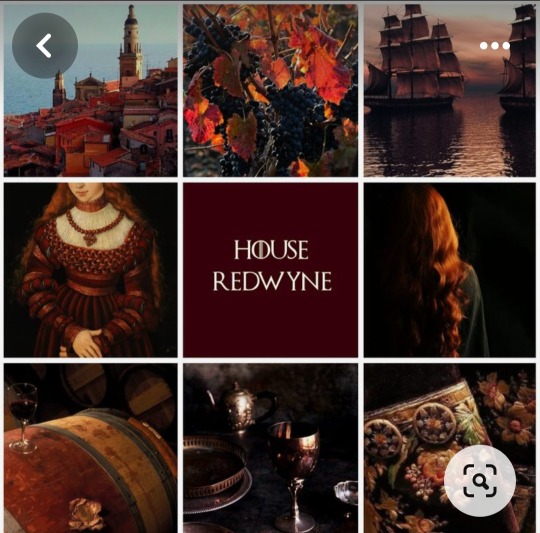

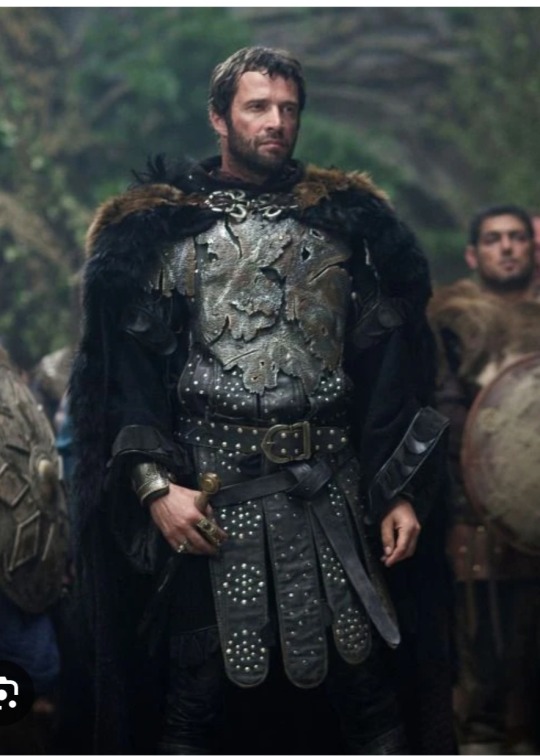
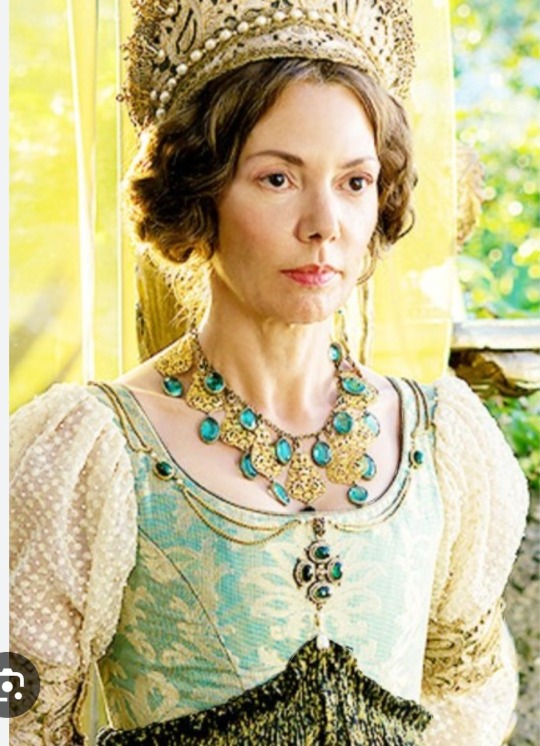
The Love story of Olenna Redwyne and Luthor Tyrell
The Love story of Margaery Tyrell's paternal grandparents is a remarkable Love story itself
When they were younger, before they finally met, Luthor was potentially betrothed to Viola Redwyne ( an older sister of Olenna ), and Olenna was potentially betrothed to Daeron Targaryen of Dragonstone
However, neither are particularly keen in marrying their former potential betrothes
When Luthor and Olenna finally met one night in the gardens of the Redwyne Castle in The Arbor, a spark ignited with them and a kindred bond ensues as both realize they are in similar circumstances at those points
The 2 formed an alliance which later grew to something more.
Luthor is a predecessor of Mace Tyrell and Loras Tyrell. He is a brave and adventurous knight who becomes a formidable King of the Reach, and also a man of lyre playing and poetry
Olenna is a predecessor of Alerie Hightower and Margaery Tyrell. Cunning and shrewd even at a younger age, Olenna came to build a remarkable camaderie of wit and eloquency, and a formidable Queen in her own right
Luthor x Olenna have some parallels to Ned x Catelyn and Jonsa in spades
🤩🤩🥺🥺🥺
#luthor tyrell#olenna redwyne#house tyrell#house redwyne#highgarden#the arbor#the reach#asoiaf universe
2 notes
·
View notes
Text
HOUSE GREYJOY
The Greyjoys of Pyke claim descent from the Grey King of the Age of Heroes. Legend says the Grey King ruled not only the western isles but the sea itself, and took a mermaid to wife.
For thousands of years, raiders from the Iron Islands—called “ironmen” by those they plundered—were the terrors of the seas, sailing as far as the Port of Ibben and the Summer Isles. They prided themselves on their fierceness in battle and their sacred freedoms.
Each island had its own “salt king” and “rock king.” The High King of the Isles was chosen from among their number, until King Urron made the throne hereditary by murdering the other kings when they assembled for a choosing.
Urron’s own line was extinguished a thousand years later when the Andals swept over the islands. The Greyjoys, like the other island lords, intermarried with the conquerors.
The Iron Kings extended their rule far beyond the isles themselves, carving kingdoms out of the mainland with fire and sword. King Qhored could truthfully boast that his writ ran “wherever men can smell salt water or hear the crash of waves.” In later centuries, Qhored’s descendants lost the Arbor, Oldtown, Bear Island, and much of the western shore.
Still, come the Wars of Conquest, King Harren the Black ruled all the lands between the mountains, from the Neck to the Blackwater Rush.
When Harren and his sons perished in the fall of Harrenhal, Aegon Targaryen granted the riverlands to House Tully, and allowed the surviving lords of the Iron Islands to revive their ancient custom and choose who should have the primacy among them. They chose Lord Vickon Greyjoy of Pyke.
The Greyjoy sigil is a golden kraken upon a black field.
Their words are We Do Not Sow.
#a game of thrones#appendix#a song of ice and fire#asoiaf#house greyjoy#pyke#iron islands#ironborn#the grey king#age of heroes#ibben#summer isles#kingsmoot#urron redhand#andals#qhored the cruel#the arbor#oldtown#bear island#harren the black#riverlands#house hoare#harrenhal#aegon's conquest#aegon the conqueror#house tully#vickon greyjoy#we do not sow
3 notes
·
View notes
Text

NAME. Froy Instad
AGE & BIRTH DATE. 24 & March 21st, 3000
GENDER & PRONOUNS. Male & He/Him
NATIONALITY. Iskaran
SPECIES. Druid ( Primal )
FACTION. N/A
OCCUPATION. Jarl of Skohfjell
FACE CLAIM. Anthony Keyvan
biography
( tw: violence, death, loss )
Beneath the shadowy canopy of dark ironwood leaves, Froy entered the world with a robust scream—a sign of vigorous health that was a rare blessing in the coal-mining town of Skohfjell. His father, Jarl Sven Ingstad, attributed this miracle to Froy's mother, Marisol, a spirited woman from the distant island of Caribella. Having spent her youth as a pirate, Marisol eventually retired from her adventurous life at sea to become a merchant, traveling throughout Taravell. It was on one of these journeys that she met Sven, and despite their different backgrounds, they fell deeply in love and married. In Skohfjell, a town that prided itself on self-reliance, the union brought no political repercussions. The townspeople, having no need for political alliances, welcomed Marisol warmly. Her piratical charisma was as captivating to them as it had been to their Jarl, swiftly winning over their hearts.
Named for his grandfather Freyr, Froy grew up enveloped by the Ironwood forest, his days spent exploring the dense woods where he never once lost his way, always finding a path back home. To the townspeople of Skohfjell, Froy seemed to carry a touch of luck; he was their unwitting charm. He could always pick the ripest tomato from the garden or crack a joke that would halt even the most persistent coughs. On the days his father brought him to the coal mines, accidents seemed to vanish and productivity soared.
Initially, his father dismissed it all as mere superstition, but a change in his son’s demeanor gave him pause. There was a distant, contemplative look that occasionally crossed Froy’s face—a look eerily reminiscent of one Jarl Sven himself had borne years ago, which he had since struggled to forget. When pressed about his distant gazes, Froy simply said he saw "markings" that others could not. The certainty of Froy’s destiny only deepened when the nightmares started.
Froy's nights were tormented by vivid nightmares: his home and the entire town of Skohfjell engulfed in flames, witchers descending amidst chaos. The smoke from the burning Skjaldwood choked him, and his voice would fail as he tried to scream for his parents. Yet every night, without fail, they were there to soothe him awake from his terror. He shared with them the worsening visions, the recurrent images of arches—the singular constant in his dreams.
Sven recognized the signs all too well; he had experienced similar calls in his youth, visions urging him to journey to the sacred arches and embrace the druidic path of the Dúnedain. But he had resisted, prioritizing his duty as the future Jarl over the mystical calling, a choice that haunted him after the visions ceased and regret settled in.
Seeing these signs in Froy, he knew his son faced a monumental decision. Determined not to let his own regrets hinder Froy's potential, he resolved to support him, no matter the laws of the High King. Froy's path would be his own to choose, and the Jarl would ensure he had the freedom to pursue it.
Leaving behind the safety of the Ironwood and his family filled Froy with trepidation, but his father’s resolute decision and his mother’s reassurances convinced him that this was the path he needed to follow. At twelve, his journey began secretly through a port arranged by his parents, leading him to Westreach of Lysara.
Awaiting him on the other side at Marinus Bay was the crew from his mother’s past, ready to honor their old friend’s request. Though they initially brought him on board for their ventures, Froy quickly became more than just a passenger. Over three years, he sailed with the pirates, visiting ports including his mother's native Caribella. To the crew, he was a talisman: winds favored their sails, their raids met little resistance, and prosperity followed them. Froy, with his gentle nature, even taught some crew members to read and write.
Yet, even amid these adventures, his nightmares persisted, growing in intensity and clarity. The arches in his dreams called to him with an urgency he could no longer ignore. Realizing his destiny lay elsewhere, Froy bid farewell to the pirate crew during a stop at the Queenset Isles, determined to answer the call that beckoned him toward his true path.
As Froy traversed the lands of Lysara, his connection to the natural world deepened, gradually diminishing the frequency and intensity of his nightmares. When he felt prepared to heed the call of the arches, he followed runes only visible through the Mist, embarking on a series of trials that would challenge his essence and shape his destiny.
The Trial of the Past: Froy found himself once again aboard the pirate ship, amidst a raging storm. Here, he realized his unique role: only he could prevent their doom through his emerging abilities. As he was poised to save them, the arches reappeared, compelling him to abandon the crew despite his heartache. The harsh lesson of sacrifice weighed heavily on him as he departed but he did so as he was highly aware of the dire consequences of ignoring the call.
The Trial of the Present: This trial brought him back to the serene embrace of the Skaldwood. The tranquility of the forest was distinct, almost nudging him forward when the arches manifested again. It was here, amidst the ancient trees, that Froy sensed the spirits of past Dúnedain. Their essence felt strangely familiar, a comforting presence that seemed intertwined with his very being, suggesting a deeper connection to his lineage.
The Trial of the Future: The final trial was a stark vision of chaos and destruction at his home in Skohfjell—his worst nightmares made manifest. The apocalyptic scene unfolded with harrowing realism: his parents and townsfolk perishing, the land ablaze, the cries of the dying filling the air. Faced with this vision of potential extinction, dread replaced hope, driving him to flee towards the arches with a desperate desire to escape the catastrophic future.
Upon emerging from the arches, Froy was overwhelmed by the brevity of his physical absence contrasted with the eternity he had experienced within. Seeking solace, he found a stream and immersed himself, feeling an immediate, profound connection with the natural elements around him. The earth, water, and air didn't just surround him; they became extensions of his being. In a moment of realization, he snapped his fingers and watched a small flame flicker above them—a tangible sign of his newfound abilities.
Over the following years, Froy roamed Taravell, deepening his bond with nature and honing his druidic magic. Despite his growth, a persistent tug pulled him back toward Skalwood—not from nostalgia, but from a sense of duty. Upon his return, he was enveloped by the familiar embrace of the ironwood, a protective presence since his childhood. His father was worried but with the help of his mother Froy assured him that this was the correct path.
As he delved deeper into the forest's secrets, Froy discovered runes scattered throughout—runes crafted by his ancestors. With this revelation, he learned of his Ingstad lineage: a long line of druids who were the first settlers of Skohfjell. Once plentiful, their numbers had dwindled with the rise of witchers, as many forsook their calling to safeguard their families or, like his father, to serve their community.
Living among these ancient markers, Froy uncovered that he was the first in many generations to heed the druidic call. This realization bestowed upon him a sense of destiny—to revive the magic of his ancestors and restore it to his people. As he prepared to embrace this role, he understood the magnitude of the task ahead and the potential resistance he might face from those who had long feared the mystical.
In the waning days of peace, Froy cherished his moments within the embrace of the ironwood. However, this tranquility was shattered when Skohfjell was besieged. Amidst the chaos, his parents fell, their loss a grievous blow that threatened to unravel him. Yet, in the face of this devastation, Froy found the strength to lead and protect, saving many of his townspeople from the same fate.
Now, leading the survivors farther north and eventually to Lysara, Froy carries the weight of being a jarl and the responsibilities it entails. The runes, those ancient symbols of destiny, still guide him, hinting at a greater purpose that remains just beyond his grasp. As he leads his people towards a new beginning, Froy is determined to be ready for whatever challenges this destiny may bring. He holds onto the belief that his role in the unfolding events of the world is pivotal and that the answers he seeks about his family's legacy and the survival of his people are tied to the very magic he has learned to wield.
personality
+ Compassionate, Resourceful, Courageous
– Overcautious, Secretive, Burdened By Destiny
played by toge. est. he/him/they/them.
1 note
·
View note
Text

Robust Climbing Salamander (Bolitoglossa robusta), family Plethodontidae, Tapanti National Park, Costa Rica
Photograph by Piotr Naskrecki
#climbing salamander#arboreal salamander#salamander#bolitoglossa#bolitoglossine#plethodontidae#amphibian#herpetology#animals#nature#central america
9K notes
·
View notes
Text


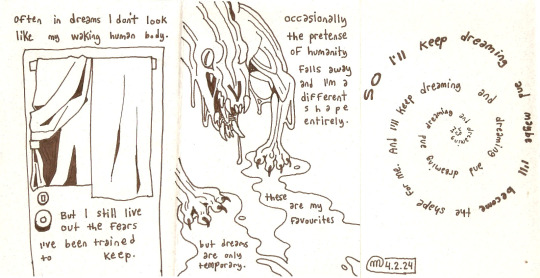
Personal zine about the Dendrogaster and myself.
#zine#mini zine#comic#therianthropy#dreams#personal#fortis arbor's art#traditional#image described#original#this is about a little bit of everything to be honest... gender and autism and identity... ahhhh the so-called human condition....
993 notes
·
View notes
Photo

Manjinder Virk in The Arbor (Clio Barnard, 2010).
Cast: Manjinder Virk, Christine Bottomley, Natalie Gavin, Parvani Lingiah, Danny Webb, Kate Rutter, Jimi Mistry, Robert Emms, Kathryn Pogson, George Costigan, Monica Dolan, Neil Dudgeon, Matthew McNulty, Lizzie Roper. Screenplay: Clio Barnard. Cinematography: Ole Bratt Birkeland. Production design: Matthew Button. Film editing: Nick Fenton, Daniel Goddard. Music: Harry Escott, Molly Nyman.
The Arbor is a heartfelt, scathing docudrama about promise without fulfillment, centered on the playwright Andrea Dunbar and her children, particularly the eldest, Lorraine, who is played on screen by the actress Manjinder Virk, lip-synching the actual Lorraine's voice from recorded interviews. Director Clio Barnard uses this technique throughout the film, with the voices of Lorraine's siblings, her foster parents, and other members of the Dunbar family dubbed in place of the voices of the on-screen actors. It's an arresting device that runs the risk of having a film full of monologues, which Barnard avoids by staging the scenes in the actual locations, particularly the drab, run-down council estate (i.e. "public housing"), where the Dunbars lived. She also includes scenes from Dunbar's plays, and the film, Rita, Sue and Bob Too (Alan Clarke, 1987), that was made from one of them. The Arbor culminates in the story of Lorraine's descent into drug addiction and the consequent death of her small son. It's not a film designed to lift your spirits, but the effectiveness of Barnard's way of telling the story makes it well worth seeing.
0 notes
Text
one of my all-time favorite pieces of television writing is in the west wing pilot when c.j., the press secretary, asks "is there anything i can say except for 'the president rode his bike into a tree'?" and leo, the chief of staff, responds "the president, while riding a bicycle on his vacation in jackson hole, came to a sudden arboreal stop"
1K notes
·
View notes
Text

beastly tail moment
#posting this on its own so it's more sharable#and also it's giving my such beast euphoira#eri?sona#scribl#arbor beasts
660 notes
·
View notes
Text
Younger Olenna Redwyne Fashions
Since Olenna ( in her younger self ) may appear in the upcoming Hedge Knight series, I'd like to Also imagine what her fashions may be like in the Hedge Knight series
The Hedge Knight is set mainly in the 14th century, a century before GOT series happens btw.



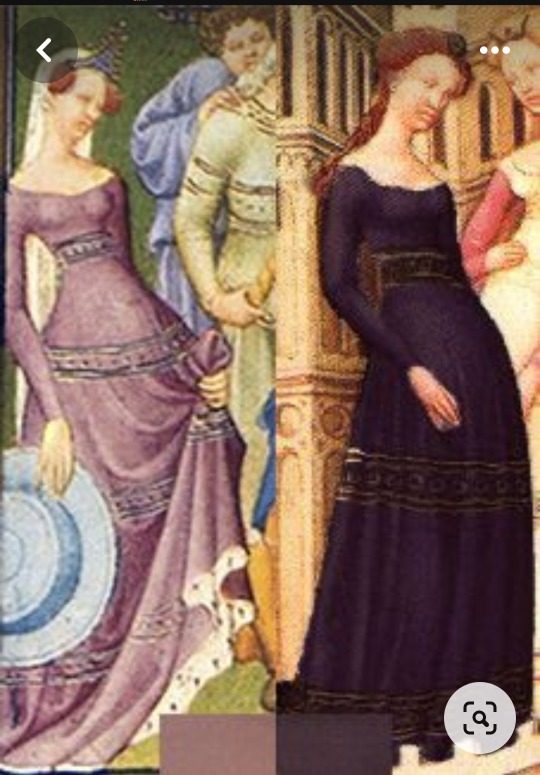

Lady of The Arbor
Before becoming Queen of The Reach, Olenna was a Lady of the Arbor. As per the House Redwyne ( the household she came from ) sigil colors ( purple and blue ), Olenna often wears splashes of purple and blue, with dresses often made of lightweight silks and gauzes


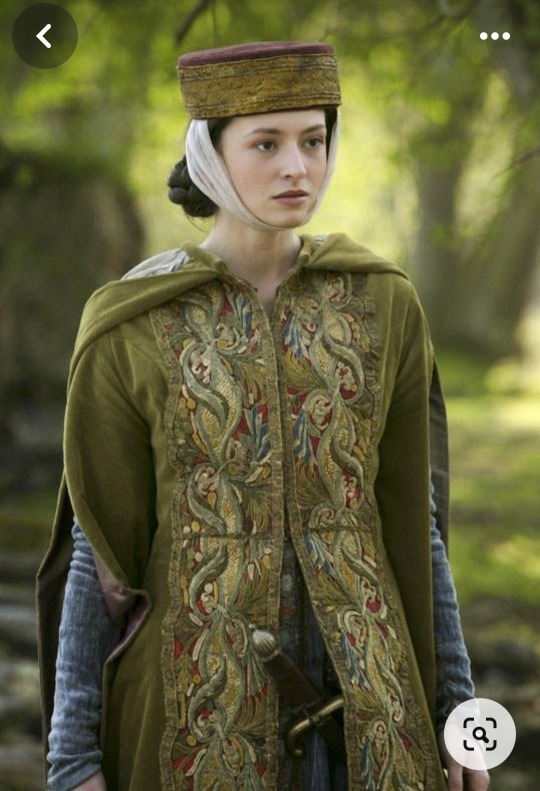
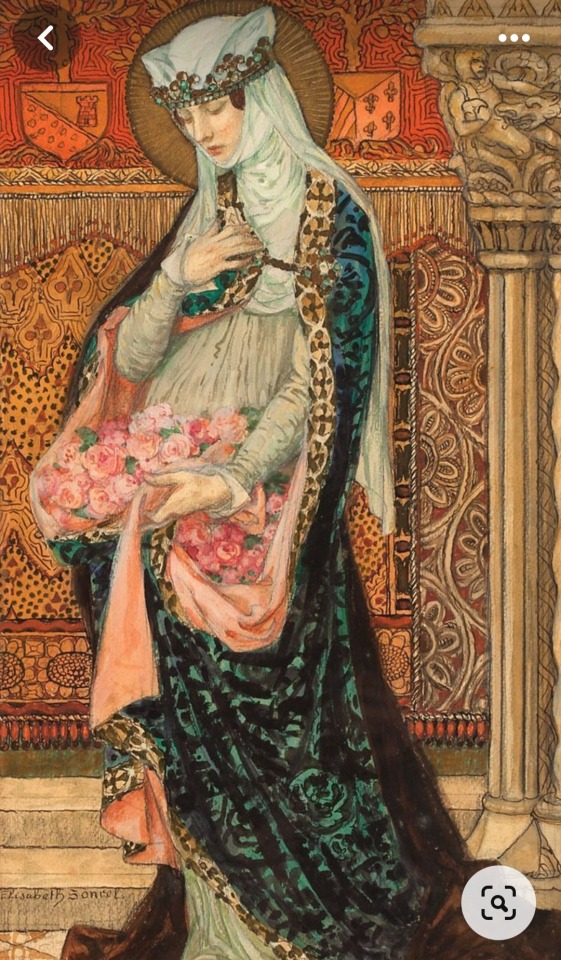

Queen of The Reach
As she becomes Queen of The Reach, Olenna began to wear shades of blue and green more often, with several splashes of purple, and a major upgrade of her wardrobe, with more complex styles and more jewels
1 note
·
View note
Text

Potato monkey, 1950. Source.
682 notes
·
View notes
Text
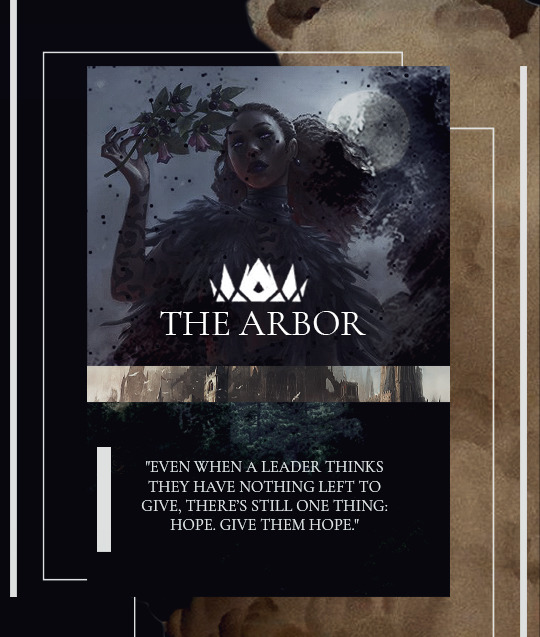
THE ARBOR ~
NAME. UTP
AGE & BIRTH DATE. 25+
SPECIES. Druid ( Primal )
FACTION. N/A
OCCUPATION. UTP
Underneath the shadowy canopy of leaves and dark ironwood, you came screaming into this world. The child of Jarl Sven Ingstad, your screaming face was denoted as a sign of good health. The runecasters had said you were born under an auspicious sign, so you were given an auspicious name to follow you into your fate. Dreams plagued you from your childhood’s hour. You saw Witchers descending upon you, forests set ablaze, and villagers crying as you stood in the midst of it all. At the heart of it all, there were the Arches, waiting for you and calling to you. The dreams did not go away, in fact, they only became worse. Your father seemed to know something about it. He sent you away, through the paths to find a port that would see you safely to Westreach of Lysara; from there, he knew without knowing that you’d find your own way.
Druid born of the ironwood, one by one you passed through the Arches knowing that you’d never be able to return home, and for all the ferocity of your father, he’d saved you in the end. You denied his wishes if only to thank him one final time; few who were smuggled from Iskaran borders ever return, but you weren’t like the others. Under the canopy of the Skjaldwood of ancient trees, you heard now how the old spirits whispered and spoke, how the Ingstad family had a legacy amongst these trees that were as old as the ground instead. You saw the language of the druids etched upon the heart of your runic origins, fate had designs for you, and your father lived long enough to see you come home before Aetheron attacked. To the road once again, seeking asylum once more, you looked to the stars and whispered with the hope that they might whisper back.
CONNECTS
THE STATIONARY: Grew up in the Highlands together within the Skjaldwood.
NOTES
TQH: Troupe 1 - Refugee
IRONWOOD: One of the few people living who know how to harvest ironwood properly.
this skeleton is currently closed.
2 notes
·
View notes
Text



Yellowbelly Mushroomtongue Salamander (Bolitoglossa flaviventris), family Plethodontidae, Chiapas, Mexico
ENDANGERED.
photograph by Laura Bok
#arboreal salamander#plethodontidae#bolitoglossa#bolitoglossine#salamander#amphibian#herpetology#mexico#animals#nature
2K notes
·
View notes
Text

Garden lighting can transform almost any design and extends the length of time one can sit outside. From indoors the results are equally important but remember that simplicity is the key to success.
Creative Gardens, 1986
#vintage#vintage interior#1980s#80s#interior design#home decor#garden#pond#arbor#stone#dining#al fresco#plants#lighting#landscape#design#home#architecture
3K notes
·
View notes
Text
How finfluencers destroyed the housing and lives of thousands of people

For the rest of May, my bestselling solarpunk utopian novel THE LOST CAUSE (2023) is available as a $2.99, DRM-free ebook!

The crash of 2008 imparted many lessons to those of us who were only dimly aware of finance, especially the problems of complexity as a way of disguising fraud and recklessness. That was really the first lesson of 2008: "financial engineering" is mostly a way of obscuring crime behind a screen of technical jargon.
This is a vital principle to keep in mind, because obscenely well-resourced "financial engineers" are on a tireless, perennial search for opportunities to disguise fraud as innovation. As Riley Quinn says, "Any time you hear 'fintech,' substitute 'unlicensed bank'":
https://pluralistic.net/2023/05/01/usury/#tech-exceptionalism
But there's another important lesson to learn from the 2008 disaster, a lesson that's as old as the South Seas Bubble: "leverage" (that is, debt) is a force multiplier for fraud. Easy credit for financial speculation turns local scams into regional crime waves; it turns regional crime into national crises; it turns national crises into destabilizing global meltdowns.
When financial speculators have easy access to credit, they "lever up" their wagers. A speculator buys your house and uses it for collateral for a loan to buy another house, then they make a bet using that house as collateral and buy a third house, and so on. This is an obviously terrible practice and lenders who extend credit on this basis end up riddling the real economy with rot – a single default in the chain can ripple up and down it and take down a whole neighborhood, town or city. Any time you see this behavior in debt markets, you should batten your hatches for the coming collapse. Unsurprisingly, this is very common in crypto speculation, where it's obscured behind the bland, unpronounceable euphemism of "re-hypothecation":
https://www.coindesk.com/consensus-magazine/2023/05/10/rehypothecation-may-be-common-in-traditional-finance-but-it-will-never-work-with-bitcoin/
Loose credit markets often originate with central banks. The dogma that holds that the only role the government has to play in tuning the economy is in setting interest rates at the Fed means the answer to a cooling economy is cranking down the prime rate, meaning that everyone earns less money on their savings and are therefore incentivized to go and risk their retirement playing at Wall Street's casino.
The "zero interest rate policy" shows what happens when this tactic is carried out for long enough. When the economy is built upon mountains of low-interest debt, when every business, every stick of physical plant, every car and every home is leveraged to the brim and cross-collateralized with one another, central bankers have to keep interest rates low. Raising them, even a little, could trigger waves of defaults and blow up the whole economy.
Holding interest rates at zero – or even flipping them to negative, so that your savings lose value every day you refuse to flush them into the finance casino – results in still more reckless betting, and that results in even more risk, which makes it even harder to put interest rates back up again.
This is a morally and economically complicated phenomenon. On the one hand, when the government provides risk-free bonds to investors (that is, when the Fed rate is over 0%), they're providing "universal basic income for people with money." If you have money, you can park it in T-Bills (Treasury bonds) and the US government will give you more money:
https://realprogressives.org/mmp-blog-34-responses/
On the other hand, while T-Bills exist and are foundational to the borrowing picture for speculators, ZIRP creates free debt for people with money – it allows for ever-greater, ever-deadlier forms of leverage, with ever-worsening consequences for turning off the tap. As 2008 forcibly reminded us, the vast mountains of complex derivatives and other forms of exotic debt only seems like an abstraction. In reality, these exotic financial instruments are directly tethered to real things in the real economy, and when the faery gold disappears, it takes down your home, your job, your community center, your schools, and your whole country's access to cancer medication:
https://www.theguardian.com/world/2012/jun/08/greek-drug-shortage-worsens
Being a billionaire automatically lowers your IQ by 30 points, as you are insulated from the consequences of your follies, lapses, prejudices and superstitions. As @[email protected] says, Elon Musk is what Howard Hughes would have turned into if he hadn't been a recluse:
https://mamot.fr/@[email protected]/112457199729198644
The same goes for financiers during periods of loose credit. Loose Fed money created an "everything bubble" that saw the prices of every asset explode, from housing to stocks, from wine to baseball cards. When every bet pays off, you win the game by betting on everything:
https://en.wikipedia.org/wiki/Everything_bubble
That meant that the ZIRPocene was an era in which ever-stupider people were given ever-larger sums of money to gamble with. This was the golden age of the "finfluencer" – a Tiktok dolt with a surefire way for you to get rich by making reckless bets that endanger the livelihoods, homes and wellbeing of your neighbors.
Finfluencers are dolts, but they're also dangerous. Writing for The American Prospect, the always-amazing Maureen Tkacik describes how a small clutch of passive-income-brainworm gurus created a financial weapon of mass destruction, buying swathes of apartment buildings and then destroying them, ruining the lives of their tenants, and their investors:
https://prospect.org/infrastructure/housing/2024-05-22-hell-underwater-landlord/
Tcacik's main characters are Matt Picheny, Brent Ritchie and Koteswar “Jay” Gajavelli, who ran a scheme to flip apartment buildings, primarily in Houston, America's fastest growing metro, which also boasts some of America's weakest protections for tenants. These finance bros worked through Gajavelli's company Applesway Investment Group, which levered up his investors' money with massive loans from Arbor Realty Trust, who also originated loans to many other speculators and flippers.
For investors, the scheme was a classic heads-I-win/tails-you-lose: Gajavelli paid himself a percentage of the price of every building he bought, a percentage of monthly rental income, and a percentage of the resale price. This is typical of the "syndicating" sector, which raised $111 billion on this basis:
https://www.wsj.com/articles/a-housing-bust-comes-for-thousands-of-small-time-investors-3934beb3
Gajavelli and co bought up whole swathes of Houston and other cities, apartment blocks both modest and luxurious, including buildings that had already been looted by previous speculators. As interest rates crept up and the payments for the adjustable-rate loans supporting these investments exploded, Gajavell's Applesway and its subsidiary LLCs started to stiff their suppliers. Garbage collection dwindled, then ceased. Water outages became common – first weekly, then daily. Community rooms and pools shuttered. Lawns grew to waist-high gardens of weeds, fouled with mounds of fossil dogshit. Crime ran rampant, including murders. Buildings filled with rats and bedbugs. Ceilings caved in. Toilets backed up. Hallways filled with raw sewage:
https://pluralistic.net/timberridge
Meanwhile, the value of these buildings was plummeting, and not just because of their terrible condition – the whole market was cooling off, in part thanks to those same interest-rate hikes. Because the loans were daisy-chained, problems with a single building threatened every building in the portfolio – and there were problems with a lot more than one building.
This ruination wasn't limited to Gajavelli's holdings. Arbor lent to multiple finfluencer grifters, providing the leverage for every Tiktok dolt to ruin a neighborhood of their choosing. Arbor's founder, the "flamboyant" Ivan Kaufman, is associated with a long list of bizarre pop-culture and financial freak incidents. These have somehow eclipsed his scandals, involving – you guessed it – buying up apartment buildings and turning them into dangerous slums. Two of his buildings in Hyattsville, MD accumulated 2,162 violations in less than three years.
Arbor graduated from owning slums to creating them, lending out money to grifters via a "crowdfunding" platform that rooked retail investors into the scam, taking advantage of Obama-era deregulation of "qualified investor" restrictions to sucker unsophisticated savers into handing over money that was funneled to dolts like Gajavelli. Arbor ran the loosest book in town, originating mortgages that wouldn't pass the (relatively lax) criteria of Fannie Mae and Freddie Mac. This created an ever-enlarging pool of apartments run by dolts, without the benefit of federal insurance. As one short-seller's report on Arbor put it, they were the origin of an epidemic of "Slumlord Millionaires":
https://viceroyresearch.org/wp-content/uploads/2023/11/Arbor-Slumlord-Millionaires-Jan-8-2023.pdf
The private equity grift is hard to understand from the outside, because it appears that a bunch of sober-sided, responsible institutions lose out big when PE firms default on their loans. But the story of the Slumlord Millionaires shows how such a scam could be durable over such long timescales: remember that the "syndicating" sector pays itself giant amounts of money whether it wins or loses. The consider that they finance this with investor capital from "crowdfunding" platforms that rope in naive investors. The owners of these crowdfunding platforms are conduits for the money to make the loans to make the bets – but it's not their money. Quite the contrary: they get a fee on every loan they originate, and a share of the interest payments, but they're not on the hook for loans that default. Heads they win, tails we lose.
In other words, these crooks are intermediaries – they're platforms. When you're on the customer side of the platform, it's easy to think that your misery benefits the sellers on the platform's other side. For example, it's easy to believe that as your Facebook feed becomes enshittified with ads, that advertisers are the beneficiaries of this enshittification.
But the reason you're seeing so many ads in your feed is that Facebook is also ripping off advertisers: charging them more, spending less to police ad-fraud, being sloppier with ad-targeting. If you're not paying for the product, you're the product. But if you are paying for the product? You're still the product:
https://pluralistic.net/2021/01/04/how-to-truth/#adfraud
In the same way: the private equity slumlord who raises your rent, loads up on junk fees, and lets your building disintegrate into a crime-riddled, sewage-tainted, rat-infested literal pile of garbage is absolutely fucking you over. But they're also fucking over their investors. They didn't buy the building with their own money, so they're not on the hook when it's condemned or when there's a forced sale. They got a share of the initial sale price, they get a percentage of your rental payments, so any upside they miss out on from a successful sale is just a little extra they're not getting. If they squeeze you hard enough, they can probably make up the difference.
The fact that this criminal playbook has wormed its way into every corner of the housing market makes it especially urgent and visible. Housing – shelter – is a human right, and no person can thrive without a stable home. The conversion of housing, from human right to speculative asset, has been a catastrophe:
https://pluralistic.net/2021/06/06/the-rents-too-damned-high/
Of course, that's not the only "asset class" that has been enshittified by private equity looters. They love any kind of business that you must patronize. Capitalists hate capitalism, so they love a captive audience, which is why PE took over your local nursing home and murdered your gran:
https://pluralistic.net/2021/02/23/acceptable-losses/#disposable-olds
Homes are the last asset of the middle class, and the grifter class know it, so they're coming for your house. Willie Sutton robbed banks because "that's where the money is" and We Buy Ugly Houses defrauds your parents out of their family home because that's where their money is:
https://pluralistic.net/2023/05/11/ugly-houses-ugly-truth/#homevestor
The plague of housing speculation isn't a US-only phenomenon. We have allies in Spain who are fighting our Wall Street landlords:
https://pluralistic.net/2021/11/24/no-puedo-pagar-no-pagara/#fuckin-aardvarks
Also in Berlin:
https://pluralistic.net/2021/08/16/die-miete-ist-zu-hoch/#assets-v-human-rights
The fight for decent housing is the fight for a decent world. That's why unions have joined the fight for better, de-financialized housing. When a union member spends two hours commuting every day from a black-mold-filled apartment that costs 50% of their paycheck, they suffer just as surely as if their boss cut their wage:
https://pluralistic.net/2023/12/13/i-want-a-roof-over-my-head/#and-bread-on-the-table
The solutions to our housing crises aren't all that complicated – they just run counter to the interests of speculators and the ruling class. Rent control, which neoliberal economists have long dismissed as an impossible, inevitable disaster, actually works very well:
https://pluralistic.net/2023/05/16/mortgages-are-rent-control/#housing-is-a-human-right-not-an-asset
As does public housing:
https://jacobin.com/2023/10/red-vienna-public-affordable-housing-homelessness-matthew-yglesias
There are ways to have a decent home and a decent life without being burdened with debt, and without being a pawn in someone else's highly leveraged casino bet.

If you'd like an essay-formatted version of this post to read or share, here's a link to it on pluralistic.net, my surveillance-free, ad-free, tracker-free blog:
https://pluralistic.net/2024/05/22/koteswar-jay-gajavelli/#if-you-ever-go-to-houston

Image:
Boy G/Google Maps (modified)
https://pluralistic.net/timberridge
#pluralistic#zirp#weaponized shelter#the rents too damned high#finfluencers#qualified investors#the bezzle#heads i win tails you lose#houston#Brent Ritchie#Matt Picheny#Koteswar Jay Gajavelli#Koteswar Gajavelli#Applesway Investment Group#maureen tkacik#Arbor Realty Trust#MF1 Capital#Benefit Street Partners#bezzle#Swapnil Agarwal#Slumlord Millionaires#KeyCity Capital#Financial Independence University#Elisa Zhang#Lane Kawaoka#Fundamental Advisors#AWC Opportunity Partners#Nitya Capital
251 notes
·
View notes
Text

#fairy lights#lights#lighting#garden#outdoor lighting#pretty#pretty places#flowers#magical#romantic#arbor#pretty lights#hygge#relax#chill#lovely#cozy place
259 notes
·
View notes
Text

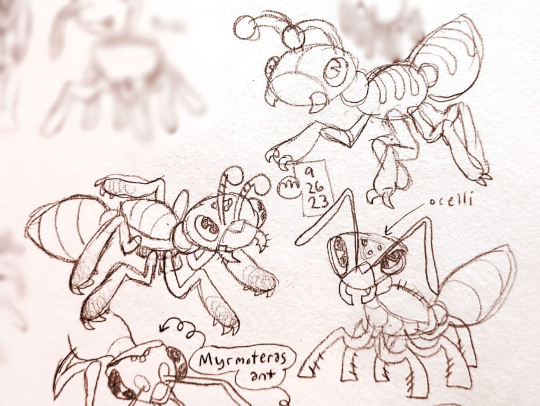
A cartoon ant (and sketches) made to add to my RedBubble (link). I'm having fun drawing cartoon bugs lately.
#bugs#ants#insects#fortis arbor's art#digital#clip studio paint#traditional#original#image described
788 notes
·
View notes